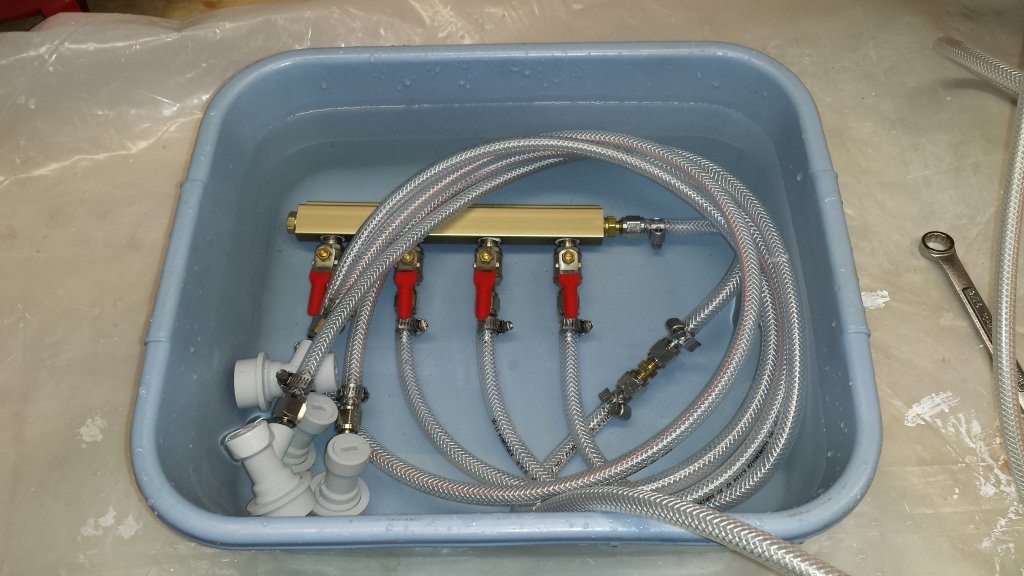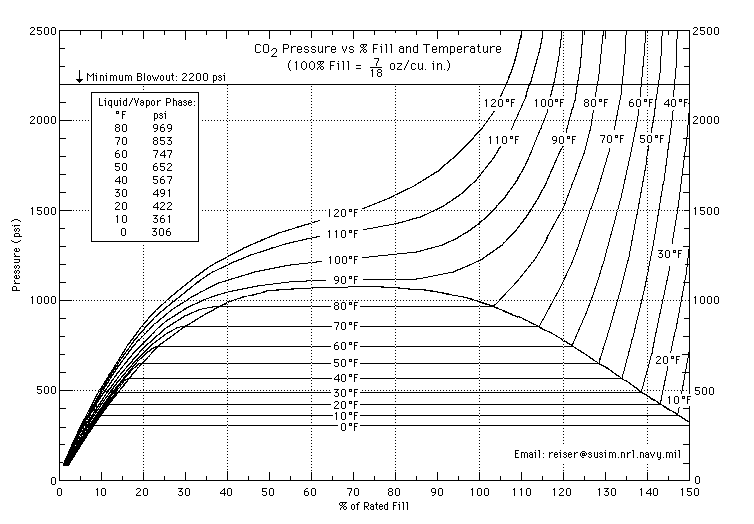I'm never sure if I am an idiot or a genius. Probably some of each.
What I definitely am is fairly new to kegging. I bought everything new in hopes of eliminating at least one variable on the problem front. I bought two three-gallon kegs, a five-pound CO2 tank, and a Taprite 742 dual gauge regulator. Things worked reasonably well, but the tank showed empty a bit sooner than I had hoped. I did a ton of purging and wasting of gas, so I can't really say if I had a leak or not.
Anyhow, I got the tank refilled, and now I definitely have a leak. I may have several leaks. Every time I react to one, I seem to find another one. I start poking around in this forum and elsewhere, and it seems like lots of people have these problems lots of times.
It occurs to me that part of the problem is that there are just too many different places in this setup that can leak. The Taprite regulator has all sorts of threaded pieces, and every time you add another thread, you add another potential leak.
Can I solve the problem by simply getting rid of the gauges? Now, there are some obvious problems here, but bear with me. Let's get rid of the entire assembly and replace it with this: https://www.amazon.com/dp/B0085EVSOU/?tag=skimlinks_replacement-20
If I am reading it right, all it does is step the pressure from my tank down to 150psi. I'd prefer to find something to step it down still further, but this all I have found so far. Next I want to connect this to a gas hose. I have not fully though this through yet, as I am not sure of the connector on the other end, but I am sure it is doable.
The other end of the house would simply terminate with a ball-lock connector. What have I accomplished? I've reduced the potential leak points to the clamps on either end of the hose. What is wrong with this? It has me feeding 150psi to my keg.
So, let's add one more part. I am pretty confident that doing so will not significantly increase my risk of a leak. This is the part: https://govreg.us/shop?olsPage=products/gov-reg-secondary-regulator-draft-dispense
The part can be adjusted to pass anywhere from 4psi to 55 psi. It cannot be adjusted on the fly, like a standard gauge can, but neither is it subject to pressure creep.
This thing is designed for taproom use, and seems to be getting popular in that application. I want to figure out how to use it in a very simple keg setup.
Am I on the right track? Or am I an idiot once again?
What I definitely am is fairly new to kegging. I bought everything new in hopes of eliminating at least one variable on the problem front. I bought two three-gallon kegs, a five-pound CO2 tank, and a Taprite 742 dual gauge regulator. Things worked reasonably well, but the tank showed empty a bit sooner than I had hoped. I did a ton of purging and wasting of gas, so I can't really say if I had a leak or not.
Anyhow, I got the tank refilled, and now I definitely have a leak. I may have several leaks. Every time I react to one, I seem to find another one. I start poking around in this forum and elsewhere, and it seems like lots of people have these problems lots of times.
It occurs to me that part of the problem is that there are just too many different places in this setup that can leak. The Taprite regulator has all sorts of threaded pieces, and every time you add another thread, you add another potential leak.
Can I solve the problem by simply getting rid of the gauges? Now, there are some obvious problems here, but bear with me. Let's get rid of the entire assembly and replace it with this: https://www.amazon.com/dp/B0085EVSOU/?tag=skimlinks_replacement-20
If I am reading it right, all it does is step the pressure from my tank down to 150psi. I'd prefer to find something to step it down still further, but this all I have found so far. Next I want to connect this to a gas hose. I have not fully though this through yet, as I am not sure of the connector on the other end, but I am sure it is doable.
The other end of the house would simply terminate with a ball-lock connector. What have I accomplished? I've reduced the potential leak points to the clamps on either end of the hose. What is wrong with this? It has me feeding 150psi to my keg.
So, let's add one more part. I am pretty confident that doing so will not significantly increase my risk of a leak. This is the part: https://govreg.us/shop?olsPage=products/gov-reg-secondary-regulator-draft-dispense
The part can be adjusted to pass anywhere from 4psi to 55 psi. It cannot be adjusted on the fly, like a standard gauge can, but neither is it subject to pressure creep.
This thing is designed for taproom use, and seems to be getting popular in that application. I want to figure out how to use it in a very simple keg setup.
Am I on the right track? Or am I an idiot once again?
Last edited by a moderator:




